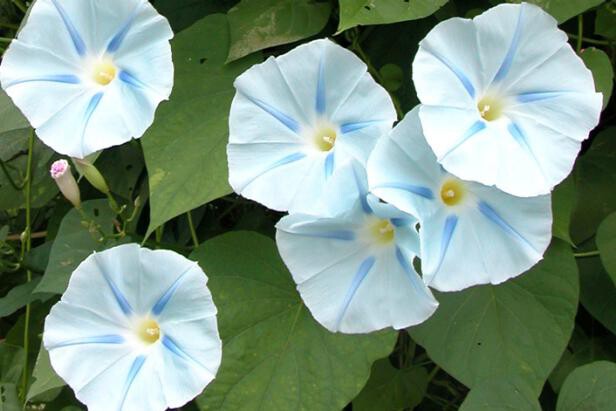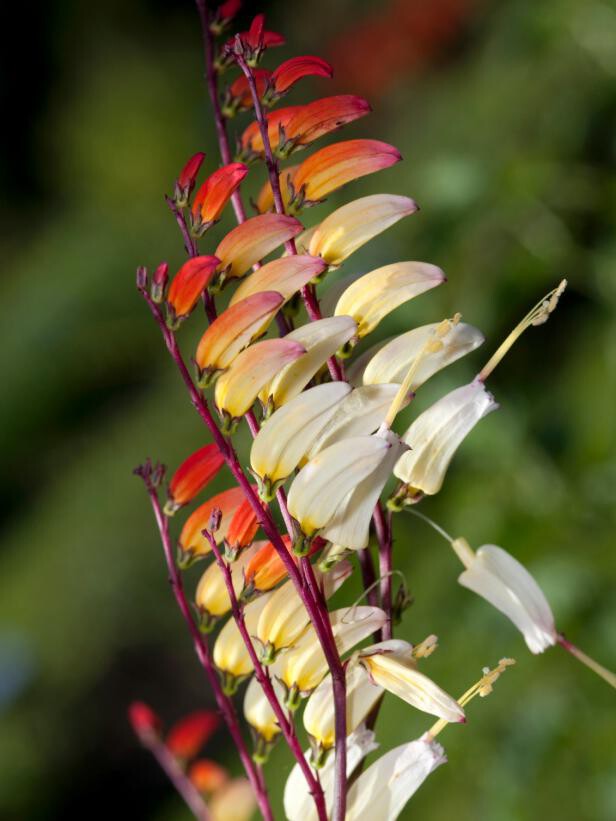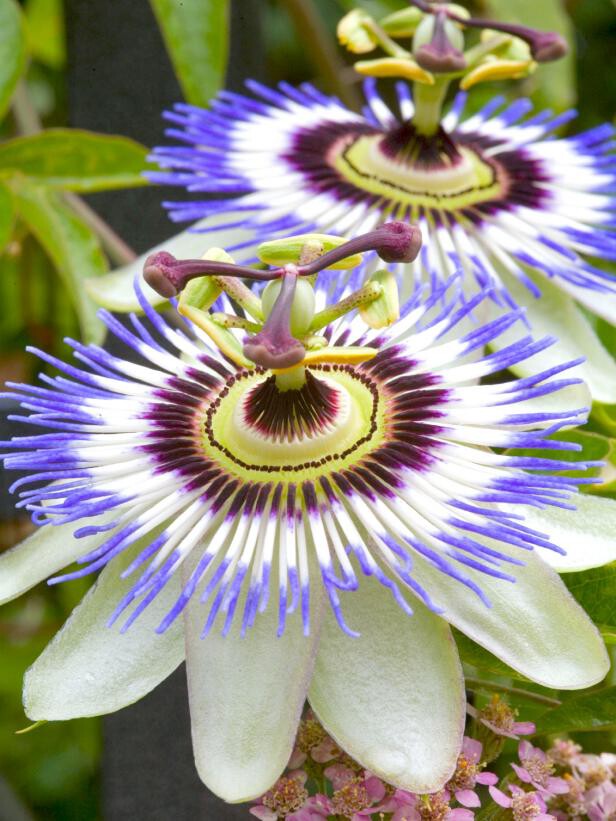
Here are the perfect plants for the gardener who fears commitment. Bold and splashy, these vines reward you with a dramatic sweep of color and foliage in a single season. Yet if you tire of them, you can become the quick-change artist of your landscape and choose another type and location next year.
Eminently versatile, they'll happily cover a trellis, a gazebo, a fence or a rock pile. But you can also let them clamber over a shrub or climb a tree. (For that matter, who says they have to climb? You can convert them to groundcovers.)
And vines offer a lot of bang for the buck. A few cents' worth of seed will, by midsummer, become a blooming wall far taller than you. Of course, they look just as charming spilling over a waist-high fence.
Most of these plants are perennials in frost-free areas. Where summers are short, give the seeds a head start by planting in peat pots about a month before the last frost date. Nick seed coats of moonflowers and morning glories or soak seeds overnight to hasten germination. Provide sturdy supports; string or twine can help the plants find their way to an overhead destination.
·Morning glory (Ipomoea). Morning glories, a daytime-blooming, less-fragrant version of moonflowers, come in a rainbow of colors; 'Heavenly Blue' may be the truest blue available in any flower. Each bloom lasts only a day. These vigorous twiners can climb to 10 feet.
·I. quamoclit (cypress vine) produces a profusion of tiny bright-crimson trumpets amid feathery leaves; the plant grows 12 to 25 feet. I. quamoclit X multifida (cardinal climber) attains about 20 feet and produces red flowers amid deeply cut foliage. Hummingbirds will love finding either of these nectar pools in your yard.
·Hyacinth bean, or lablab (Dolichos lablab). A member of the pea family, this Egyptian native can easily twine its way to a height of 10 to 12 feet. Broad green leaves with purple veins arise from purple stems. Although lablab produces upright sprays of fragrant, purplish-pink flowers, the plant's lustrous magenta-purple seed pods are its greatest achievement. Lablabs strongly object to being transplanted, so direct-sow if possible. Plant in full to half sun.
·Love-in-a-puff, or balloon vine (Cardiospermum halicacabum). A conversation piece, this tender perennial's chief attraction is its fruit crop — puffy, papery seed pods about an inch across that develop from tiny white flowers. The little balloons seem animated as they swing in the wind. Inside the pods are black seeds, each marked with a heart. Love-in-a-puff climbs with clinging tendrils to about 10 feet.

Firecracker vine, or exotic love (Ipomoea lobata, formerly Mina lobata). The tubular flowers of this vigorous Mexican native open scarlet and age to orange, then creamy yellow, with all the colors present along a spray. It climbs up to 20 feet.

Black-eyed Susan vine (Thunbergia alata). This brightly hued flower only vaguely resembles the true Black-eyed Susan. Its dark eye, usually amid orange petals (sometimes white or yellow), is the opening to a deep throat. Because this twining vine usually grows six feet or less, it's often planted atop retaining walls and in hanging baskets. But you can also let it climb fences and trellises. Start seed indoors six weeks before the last frost, or direct-sow in partial shade after the last frost.

Cup-and-saucer vine — also called cathedral bells or monastery bells (Cobaea scandens). If you sit in your garden nonstop for a few days, you can watch an interesting metamorphosis take place in this Victorian-age favorite. Green buds unfurl to produce pale green saucers (the calyzes), followed by green cups (flowers); the combo then gradually turns striped lavender, followed by violet-purple. Later dark green fruits appear. Cup-and-saucer vine has clinging tendrils and needs only a rough wall, on which it can easily reach 20 feet. Start early, indoors in peat pots; flowering takes almost four months.

Moonflower, or moon vine (Ipomoea alba). Six-inch-wide sweetly fragrant, silky white trumpets open at sunset and fade the next morning. The heart-shaped leaves form dense foliage on twining vines up to 15 feet

Passion flower (Passiflora). These spectacularly showy fringed flowers bloom on a vigorous tendril vine that can reach 20 feet. A tender perennial, the passion flower may die back in winter but will reappear in spring if the roots have survived. The blue, or common, passion flower (P. caerulea) has white and lavender flowers up to four inches wide and is hardy to zone 8. The maypop (P. incarnata), a native plant, has two-inch-wide mostly lavender fringed flowers and is hardy to zone 7. Maypops are often grown from cuttings, as the seeds can be tough to start.